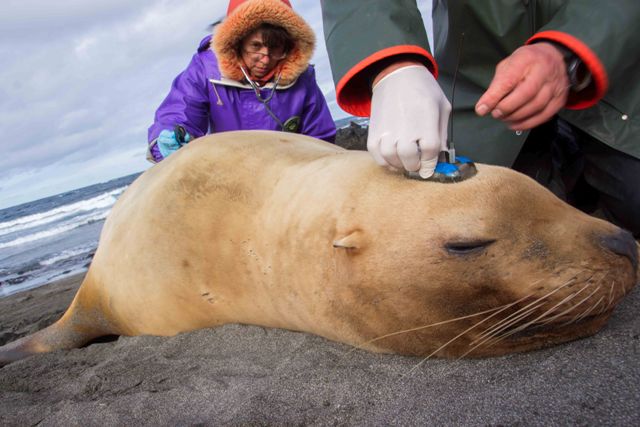Expedition of researchers from Kamchatka Branch of Pacific Institute of Geography (KB PIG) FEB RAS led by Vladimir Burkanov, PhD (biology), has recently ended on the Commander Islands. Scientists managed to GPS-tag 5 sea lions: 3 pups and 2 adult females. The mission succeeded regardless of difficult weather conditions or unpredictable animal behavior.
Ivan Usatov, Sergey Fomin, JRFs from KB PIG FEB RAS, Andrey Tretiakov, member of the International Counsel for Marine Mammals, Irena Tokarevskih, veterinary physician, PhD (Biology) and Vladimir Burkanov, leading researcher of KB PIG FEB RAS and the leader of the group – together 5 scientists worked on the Severo-Zapadnoye rookery on Bering Island.
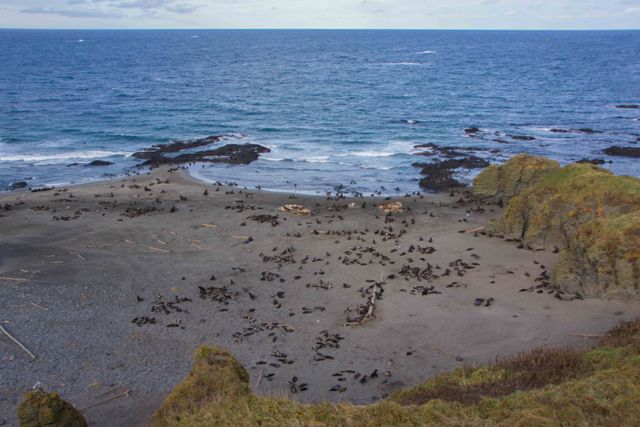
View on the Severo-Zapadnoye rookery. Bering Island
The group worked on the island from October 1st till October 21st. Their plan was to install 9 GPS-tags on animals, preferably on adult lactating females to register their location and diving activity. Lactating females are an important part of the population as all future generations depend on them. Next important part is first-year pups.
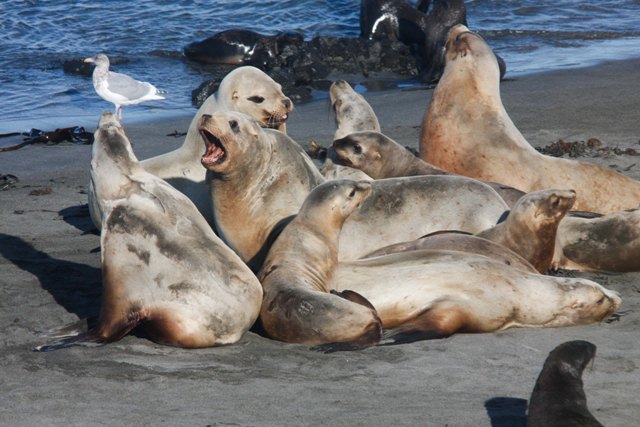
Sea lion females are too close to water
First female was tagged on October 9th. It became the first successful tagging.
The next one took place on October 11th. The scientists tagged her pup. It is easier to tag a pup, because pups can be caught with a special net and adult animals should be put to sleep, which is dangerous for scientists and for the animal.
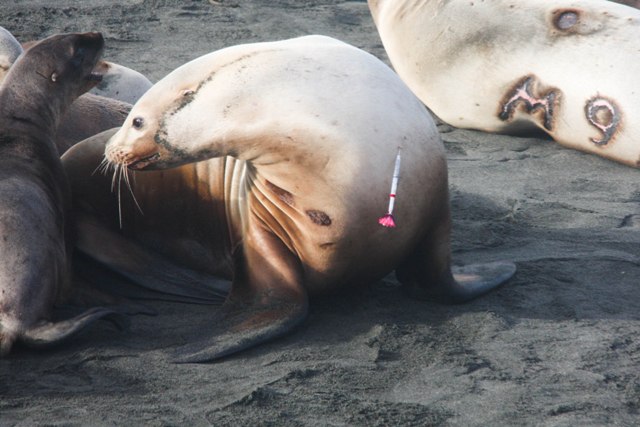
Sea lion female with a flying syringe
The main obstacle is unpredictable weather and behavior of sea lions and northern fur seals.
Flying syringe, used to put animals to sleep, can change its trajectory under the influence of rushing mighty wind or slanting rain. Moreover, sea lions have a strong sense of smell, so scientists can approach animals only from the leeward side. To minimize the risk of death for the animals, researchers needed the animals to lie as far as possible from the water, but it can’t be seen every day. Besides, northern fur seals often occupy a big part of the Severo-Zapadnoye rookery and prevent researchers from making accurate shots.
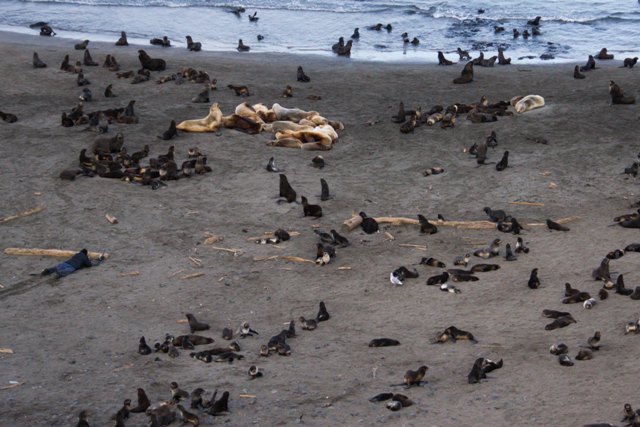
Andrey Tretiakov approaching sea lions before taking a shot
Unfortunately, two adult females died of sudden cardiac arrest after a shot of tranquillizer. Life support activities of the researchers couldn’t help the animals.
Evgeny Mamaev, PhD (Biology) and Deputy Director For Science in the Commander Islands Nature and Biosphere Reserve, said that regardless of the fact, that only 5 out of 9 animals were tagged, the work can hardly be overestimated. “The participants of the expedition had to work in difficult conditions. In autumn weather on the Commander Islands is rarely nice. Nevertheless, a number of tags were installed. It is a huge step towards a better understanding of sea lions biology on the Commander Islands, where its population is decreasing throughout many years,” said E. Mamaev.
GPS-tags will allow finding wintering grounds of the Commander Islands sea lion group and their feeding behavior in winter. In fact, several years ago the animals used to stay on the Commander Islands for winter, but they started to leave it for some other destination.
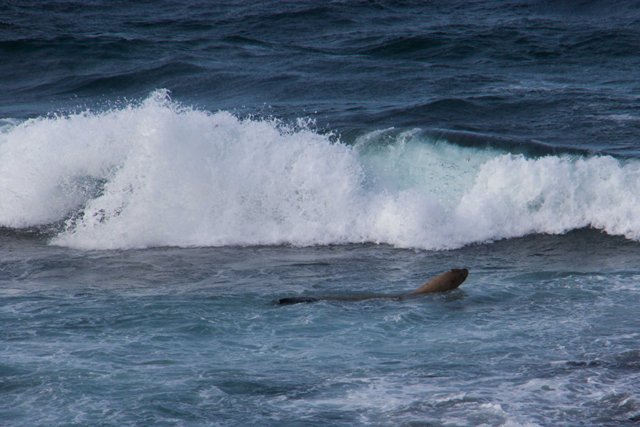
Tagged sea lion female went searching for food
Vladimir Burkanov, PhD (Biology) and leader of the expedition, said that conditions in the new wintering grounds might cause reduction of the population.
“The majority of wintering grounds of Commander Islands sea lions are unknown and we cannot protect these animals only within the protected area of the islands. The animals pass half of the year in places, protection status of which is unknown or where the rules are not observed. Conditions in these wintering grounds may be the essential factor in the decrease of sea lion population. Adult females are the most important part of the population, so our goal was to get the necessary data to improve protection of the species,” said Vladimir Burkanov.
Today we have already received some data. For example, the female, tagged with her pup, left the Commander Islands for Kamchatka peninsular together with the pup. In average sea lions can swim as far as 600km away from the islands.
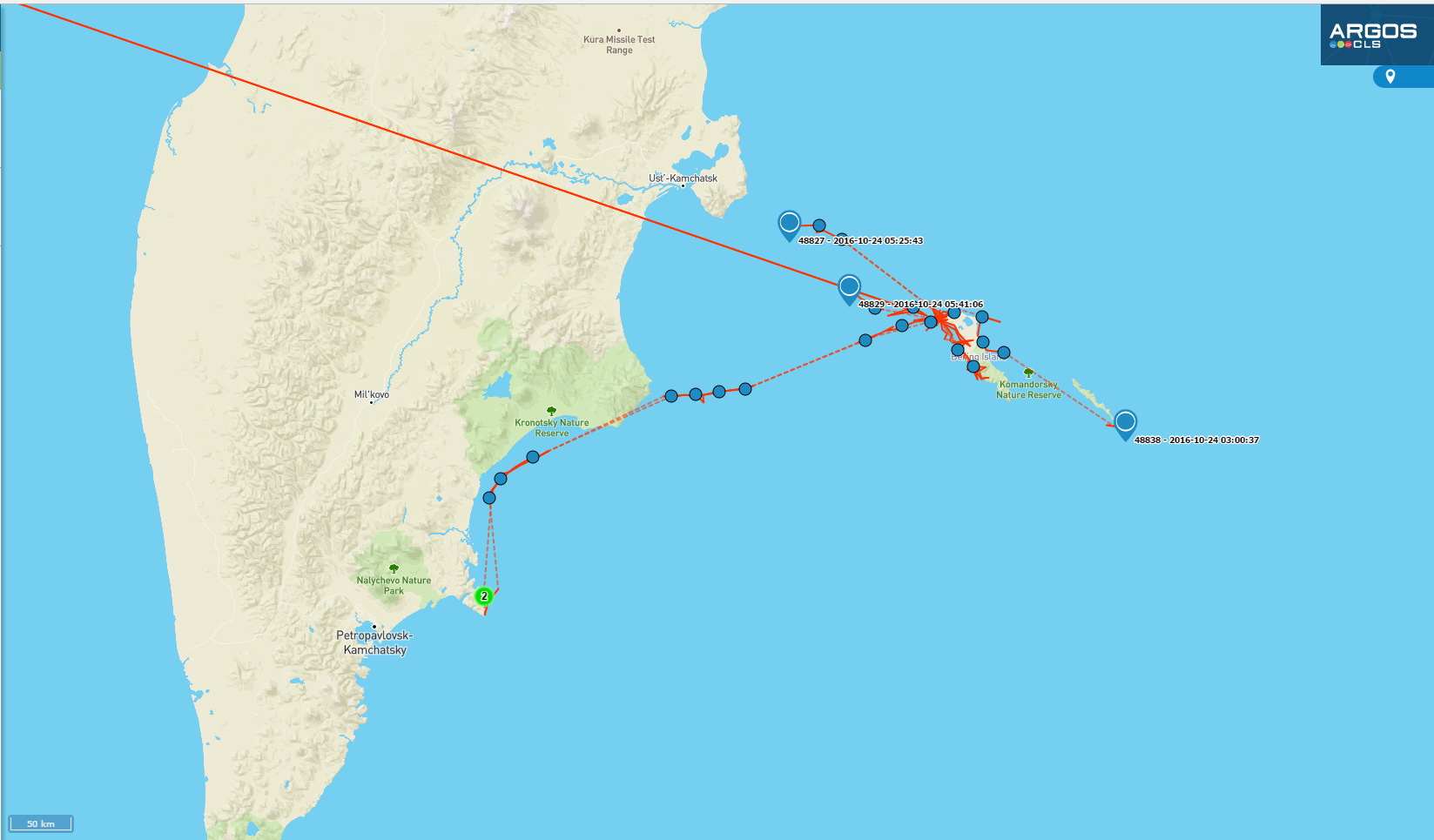
GPS track of the tagged sea lions. One female and its pup are near Kamchatka peninsular.
The Commander Islands Nature and Biosphere Reserve employees monitor population numbers of the local group all year round. During navigation period, which lasts till the end of October, scientists regularly monitor animals on Ary Kamen and sometimes on Medny and coastal areas of Bering Island, including Monati Cape. After the end of navigation monitoring takes place mainly on Severo-Zapadnoye and Severnoye rookeries on Bering Island.
Photos are provided by the scientific group of KB PIG FEB RAS









